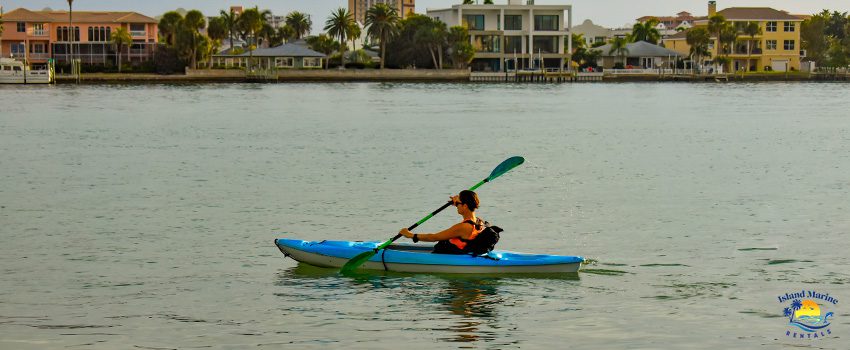Interesting facts about kayaking will surely get you excited to get on board a kayak.
It’s the perfect combination of workout, fun, and adventure. Kayak trips are popular with teens and adults looking to have a taste of adventure and relaxation. However, there’s something more about them than what people know.
Before kayak racing became a part of the Olympics and go-to leisure activity, it was used for hunting. Let’s uncover not-so-popular facts about kayaks and see them from a different perspective.
Kayaking Facts You Should Know About
You might be surprised about how modern kayaks differ from the first kayaks that existed. If you’re into kayak trips or you’re planning to experience it this year, you may want to know facts about kayaking. Discover its interesting history — how it was built, its origins, and interesting stories involving a kayak — here.
Here are some of them:
1. The word “kayak” means “man’s boat” or “hunter’s boat.”
Today, people often associate kayaking with chilling, fun, and adventure. However, kayaks had a different purpose back then. They were initially engineered for hunting food. Kayaks were perfect for following animals that inhabited the shores.
Kayaks were also a suitable means of transportation because they were small. It allowed people to creep on animals without scaring them away.
2. Kayaks originated from the sub-Arctic regions.
One of the most interesting kayaking facts is this. Among the native tribes that used kayaks are the Aleut, Eskimo, Ainu, and Inuit hunters. They lived in the sub-Arctic regions of Greenland, North America, and northeastern Asia.
3. Old kayaks were made of whalebones and animal skins.
Unlike today, when anyone can easily get their hands on inflatable kayaks, one would have to get creative during primitive times.
The Eskimos built kayaks by either stretching animals’ skins over frames out of whalebones or using driftwood. Then, they rubbed whale fat to waterproof them.
They used seal bladders filled with air to enhance the buoyancy of their vessels. They put it in the fore and aft sections of the kayak. Aside from the one-person kayak, they also have a version that looks more like a modern kayak. They had larger kayaks — called umiaqs — used to carry belongings and entire families.
4. Oscar Speck traveled aboard a kayak from Germany to Australia.
Before World War I began, Oskar Speck set out on a journey to leave his impoverished hometown in Germany — Wymar Republic. That’s when he paddled from the Danube River to the Mediterranean Sea aboard his folding kayak. His original journey was supposed to end in the copper mines of Cyprus.
However, the call of kayaking adventure was stronger. Oskar Speck’s adventure wasn’t always breezy. He experienced many hurdles as he tried to reach the coast of Australia. This impressive feat not only makes Speck incredible but also shows the capability of a kayak to withstand the odds.
5. In 1936, kayak races were included in the Olympics.
Kayaking wasn’t part of the Olympics until 1936. According to the International Canoe Federation, it started as a demonstration sport in 1924. However, it took three Olympic Games before it became an official part of its program. There were a total of 9 events wherein 119 athletes from 19 nations took part.
One of the most interesting kayaking facts is that it used to be a men-only event. The first women paddling event debuted in 1948: a 500-meter singles kayak competition. The first and last appearance of folding kayaks was in the 1936 Summer Olympics.
6. Adolf Anderle inspired the International Scale of River Difficulty.
Adolf Anderle rode a kayak in the Salzachofen Gorge on the Salzach River located in Austria. His achievement led to the creation of the International Scale of River Difficulty. The International Scale of River Difficulty classifies a river’s difficulty and is used by whitewater rafters and kayaking enthusiasts across the world.
7. European countries dominate world championship and Olympic kayaking.
When it comes to kayaking, European countries always have a spot on the top. They often win the majority of medals in kayak world championships and Olympic games. Germany is one of the leaders when it comes to this watersport.
8. Franz Romer crossed the Atlantic aboard his collapsible kayak.
Another one of the lesser-known facts about this waterborne activity is Franz Romer’s achievement. He crossed the Atlantic in 1928. He paddled for 58 days on his own — starting from Lisbon, Portugal. Romer successfully reached the shores of the U.S Virgin Islands, but he wasn’t given the attention he deserved.
Not being much of a storyteller, Romer didn’t give many details about his voyage. His kayaking adventure was not all good as he had to endure the scorching heat of the sun, sleepless days, and the harsh waves. Still, Romer’s accomplishment still amazes the people of today.
Rent a Kayak at Island Marine Rentals
Now that you know riveting facts about kayaking, it’s time to experience the thrill for yourself.
Island Marine Rentals offers kayak rental at Clearwater Beach, FL. With us, veterans and enthusiasts at kayaking are guaranteed to have a lot of fun. You can choose between single kayaks or double kayaks. Our rental packages come with plenty of inclusions, such as the following:
- Stainless Steel Whistle
- Paddles
- Life Vests
- Dollies
- Transportation Strap
We have 1-, 2-, 4-, 8-, 24-hour, and 1-week rental packages available. Be able to choose the right one suitable for your itinerary.
For our single kayaks, the price range is between $25 and $195. For our double kayaks, the price range is between $30 and $225. Kayaking is perfect for everyone — kids, teens, and adults alike.
Get your much-needed break with Island Marine Rentals. Book a kayak in advance. We can’t wait to have you and your loved ones with us!


